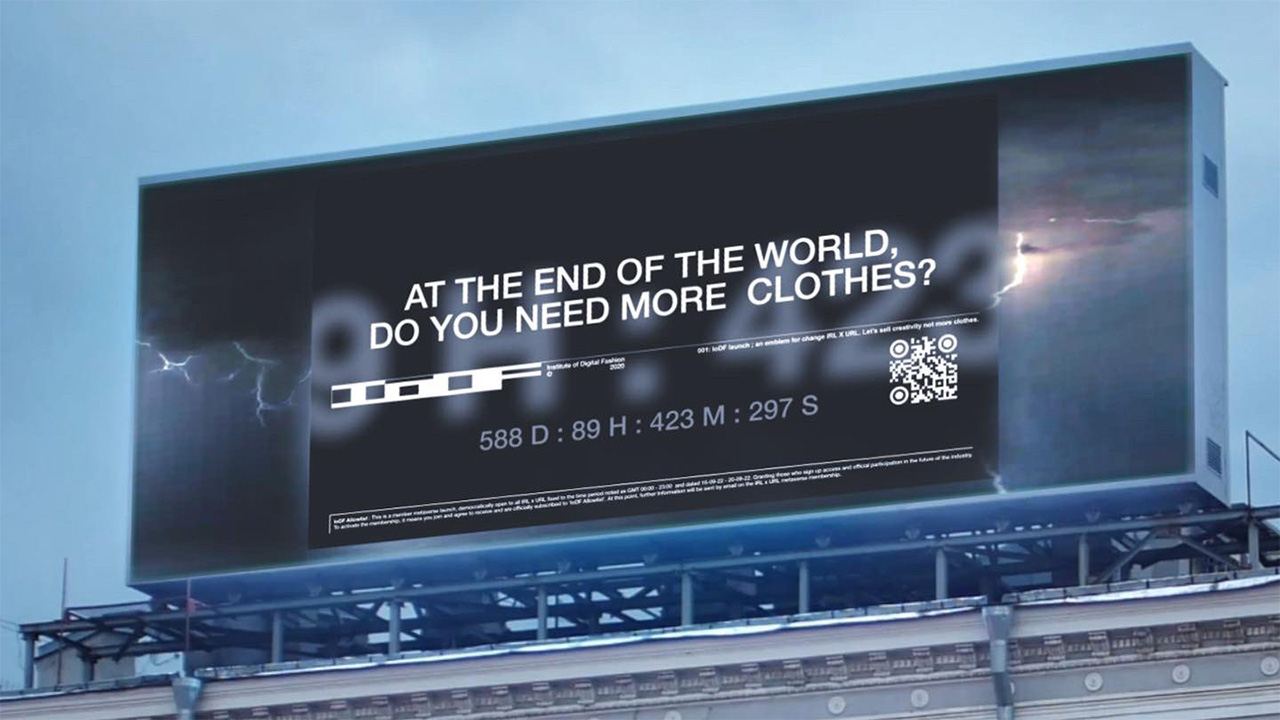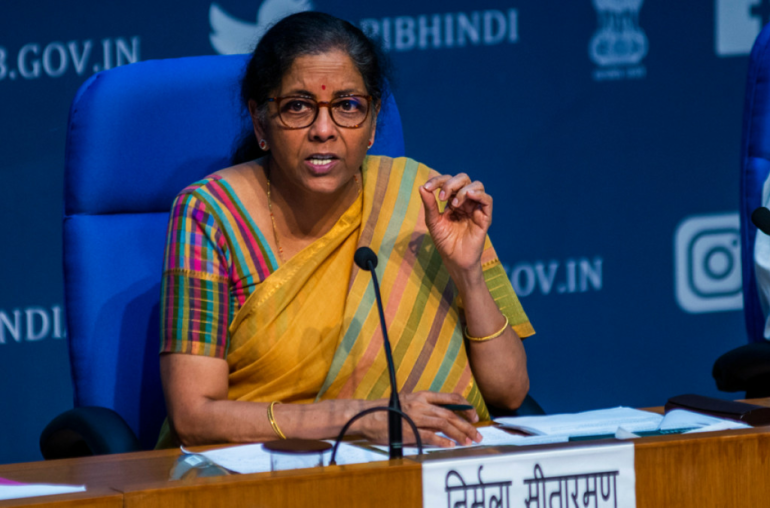From Coperni’s spray-painted dress to seeing double at Gucci, this season’s fashion month was packed with newsworthy moments. But while others took full advantage of the official comeback of the physical runway, others couldn’t quite seem to get the metaverse off their mind as token activations, private NFT members clubs, and virtual playgrounds cropped up from all corners.
As the industry officially begins to recognize the power of digital and its immeasurable impact on the future of the market, Jing Daily rounds up the brands that are proving that Web3 is here to stay.
New York’s NFT keys favor accessibility
Unsurprisingly, New York was at the top of the list when it came to the number of big fashion names embracing the metaverse, largely thanks to its burgeoning crypto community and Web3 scene. The standout moment of the week was, for many, the unveiling of Tommy Hilfiger’s cross-dimensional extravaganza, which was attended in-person by the likes of NFT collector gmoney and Emily Yang, as well as streamed virtually via Roblox.
Meanwhile, Puma launched its ongoing metaverse website experience Black Station to celebrate its return to the runway, placing it back in the running as one of the major sportswear leaders in the Web3 space alongside competitors Adidas and Nike. In a bid to expand digital experiences for avid NYFW followers, brands including Altu by Altuzarra, Kim Shui, Jonathan Simkhai, AnOnlyChild and The Blonds offered audiences the chance to attend their shows by investing in an “NFT key,” in partnership with AfterPay.
Afterpay partnered with five notable designers to offer NFT keys that unlock IRL access to New York Fashion Week. Photo: Afterpay
Carolina Herrera took a different approach, teaming up with 3D digital artist @Lovespun to transform its finalè dress from the collection (worn by Karlie Kloss) into a digital wearable available to purchase on Roblox, powered by the platform’s Layered Clothing technology. Activations like these are making the ready-to-wear production line swifter than ever, with consumers able to own virtual replicas of their favorite designs straight from the runway.
London’s rising names leverage Web3 for advocacy
In the run up to London’s Fashion Week, emerging designers and creatives chose to use their platforms as a voice — and force — for change, both online and offline. Most notably was the Institute of Digital Fashion’s billboard campaign, which saw the solution-driven pioneer organize a series of display panels plastered with slogans such as “At the end of the world, do you need more clothes?” as well as physical access points where audiences could find recycled metal tokens embossed with QR codes. The access points also opened up entry to a dedicated LFW NFT drop, “IoDF 001,” in addition to exclusive access to future IoDF drops.
A post shared by Institute of Digital Fashion (@institute_digital_fashion)
Lauren Kacher, founder of Alterrage and member of the Metaverse Fashion Council, believes cases like these set the digital precedent and inspire creators to explore the cross-industry opportunities. “With each season, the digital, phygital, and Web3 fashion industry grows through consistent efforts put in by both pioneers and contributors who believe in a more equitable, open and sustainable fashion system,” she explains. Describing itself as an “emblem for change,” IoDF’s LFW initiative demonstrated how companies can effectively integrate the world of Web3 into consumers’ everyday lifestyles while advocating for a more democratic future in fashion.
Retail store Flannels also joined the virtual wave this season with its first-of-its-kind store takeover in partnership with public exhibition space W1 curates and Web3 community NFTUK. The project not only transforms the typical shopping experience but also helps Flannel lay the foundation for becoming a leading retailer in this space.
Moncler introduces Milan to the metaverse
As part of its 70th anniversary spectacle at Milan Fashion Week, Moncler released a digitized version of its iconic Maya 70 jacket as an NFT. The token corresponded with a limited-edition drop of 500 physical products and was designed by German 3D artist Antoni Tudisco — the brains behind the virtual reimagining of some of luxury’s most esteemed sneaker silhouettes.
The exclusive Maya 70 jacket comes a gift, Moncler’s first ever NFT. Photo Moncler
Though not the house’s first foray into the metaverse (POP MART x Moncler collection caused a frenzy across Chinese consumers earlier this year), it was certainly its most ambitious yet. The drop marked the beginning of the brand’s “Extraordinary Exhibitions” concept, which will see Moncler host several interactive pop-ups where visitors can access immersive experiences and NFT artworks across the fashion hubs of New York, London, and Seoul.
Paris brings POAP and NFT membership programs to prominence
Arguably some of the best Web3 activations came to fruition during Paris Fashion Week. Up-and-coming designer Victor Weinsanto found inspiration in Korea’s idol industry, releasing his first digital wearable collection in collaboration with pop icons Lightsum and metaverse platform Brand New Vision. The release joins a number of names across the K-pop and C-pop sectors, such as BTS and Jay Chou, who are turning to the virtual landscape to bolster their marketing campaigns and drive new experiences for their fanbases.
Moreover, Louboutin dropped its first ever NFT with POAP, to offer the guests of its eclectic showcase a virtual “badge of honor” and keepsake from the event. QR codes scattered around the location made onboarding for audiences widely accessible, even to those who had no experience with crypto wallets and token ownership previously.
Louboutin gifted a complimentary NFT to viewers of the exclusive online streaming of the “Loubi Show II.” Photo: Louboutin
Balmain also revealed the next phase of its metaversal roadmap with The Balmain Thread, a bespoke membership created in conjunction with premium minting platform MintNFT. As one of the early adopters of Web3, the French house has consolidated a strong virtual presence — and its latest endeavor is no different, as it becomes the first global luxury fashion firm to create an NFT-based membership program.
The future of Web3 fashion looks bright
While luxury is still only scratching the surface of Web3’s potential, it was refreshing to see widespread recognition of how the digital landscape can enhance a brand’s offline storytelling rather than replace it. “I’m curious to see when the luxury fashion houses will dive deeper into the blockchain space and attach unique digital ownership for their luxury clientele,” Web3 strategy chief for digital-first brand Cult & Rain, Shekinah Apedo says. If this season is anything to go by, it’s a promising sign as to what lies in store for the future of fashion month as we know it.
Fashion, Jing Meta
Balmain, christian louboutin, london fashion week, metaverse, milan fashion week, moncler, new york fashion week, NFT, paris fashion week, Tommy Hilfiger, Web3
© 2022 Herlar, LLC. All rights reserved. Jing Daily® is a registered U.S. trademark of Herlar, LLC.
Sign up for our daily newsletter to unpack the business of luxury in China. Gain insights, analysis, and breaking news from our on-the-ground reporters.
Necessary cookies are absolutely essential for the website to function properly. This category only includes cookies that ensures basic functionalities and security features of the website. These cookies do not store any personal information.
Any cookies that may not be particularly necessary for the website to function and is used specifically to collect user personal data via analytics, ads, other embedded contents are termed as non-necessary cookies. It is mandatory to procure user consent prior to running these cookies on your website.



